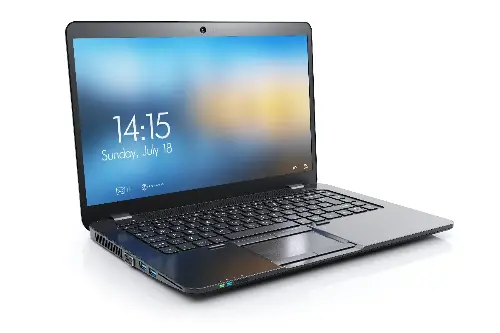When it comes to purchasing a laptop, it's easy to be overwhelmed by the highly technical specifications and the sheer variety of options available. However, by understanding what features to consider and doing meticulous research, you can ensure you invest in a laptop that serves your needs for years to come.

Firstly, the heart of any computer is the processor, or CPU. Consider it as the brain of your machine; the stronger it is, the more efficient your laptop will be. Intel and AMD are the market leaders, with their respective ranges of i3, i5, i7, and i9 for Intel and Ryzen 3, 5, 7, and 9 for AMD. Normally, an i5 or Ryzen 5 processor will handle everyday tasks with ease, while i7 or Ryzen 7 and above are suited for demanding software and multitasking.
The amount of RAM is also critical. RAM, or Random Access Memory, is the short-term memory of a laptop. It determines how well your laptop can handle multitasking. For general use, 8GB is typically adequate, but for more demanding tasks like video editing or gaming, 16GB or more is advisable.
Storage is another essential consideration. There are two main types of storage: HDD (Hard Disk Drive) and SSD (Solid State Drive). SSDs are significantly quicker and more reliable than HDDs. For most users, a 256GB SSD is a good starting point, but if you deal with large files, consider 512GB or 1TB.
Display quality is vital for an enjoyable viewing experience. A minimum of 1920x1080 pixels, commonly known as Full HD, should be considered the baseline for crisp visuals. Those who work in graphic design or video editing will benefit from higher-resolution displays like 4K. The size of the screen is also important—typically ranging from 11 to 17 inches. Smaller screens are more portable, whereas larger ones are better for productivity and entertainment.

Battery life can't be overlooked, especially for those frequently on the go. Look for laptops that offer at least 8 hours of battery life, which is a reasonable expectation for a modern machine. However, keep in mind that tasks such as video playback or intensive graphic work drain battery faster.
When it comes to connectivity, examine the kinds and numbers of ports available. USB 3.0 ports are standard, but with more accessories moving towards USB-C, ensure your chosen laptop supports it. HDMI output can be handy for presentations or entertainment setups, and an SD card slot is useful if you frequently transfer photos from a camera.
The laptop's build quality is something to ponder on. A sturdy chassis can handle the rigours of daily use. For top-notch durability, look at laptops that have passed MIL-SPEC testing. However, stronger build quality often translates to added weight. Strike the right balance between resilience and portability according to your usual work environment.
Keyboard and touchpad ergonomics are sometimes underestimated. A comfortable keyboard with tactile response and backlit keys is preferable for those who type extensively. The touchpad should be responsive and ideally support multi-finger gestures.
It's wise to also ponder over the operating system. Windows and macOS are the most common, with Chrome OS also gaining traction thanks to the affordability of Chromebooks. Your preference might be dictated by the software ecosystem you're invested in or specific applications you need.

Moreover, consider the brand's reputation for quality and customer service. Researching customer reviews, warranty terms, and service options can save you from headaches if you encounter issues down the line.
Last but not least, think about upgradability. Some laptops allow you to upgrade components like RAM and storage, which can significantly extend the device's lifespan. However, ultraportables and certain brands limit the ability to upgrade, so decide if this flexibility is important to you.
In conclusion, buying a laptop that satisfies your needs and lasts for years doesn't have to be daunting. By focussing on the important features and understanding your personal requirements, you can make an informed decision that brings long-term satisfaction. Take your time to compare options, read reviews, and perhaps even test models in person. This legwork will pay dividends, ensuring you end up with a reliable companion for your digital life.
